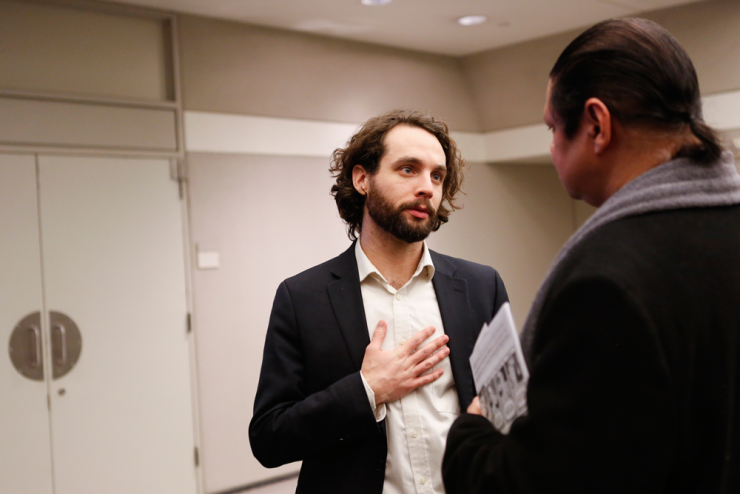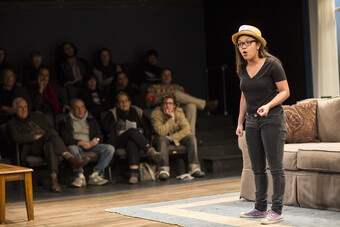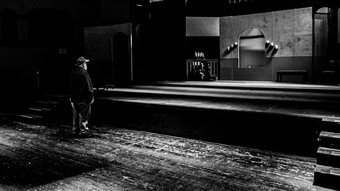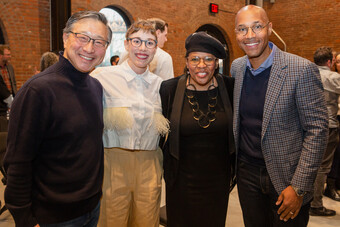From Crisis to Creation in New York City
Time to Buy In
I was working on this before Judith Malina passed away this month. I wasn’t sure whether to publish it or something else. But the truth is I could never put into words what losing her means to me personally, or to The Living Theatre, or the community of New York City. The work is now up to us. We can do it with love, in her name, and in the name of many others who have come before us.
On Monday February 9th, over fifteen arts service organizations came together in New York City at The Graduate Center CUNY, gathered by The Martin E. Segal Theatre Center to discuss what they have already done and are still doing in response to the financial crisis of 2008 that devastated much of the performing arts sector.
We must come together to overcome the challenges facing artists in the modern economy and establish the arts as a vital sector, and I believe that fully utilizing arts service organizations is one step in our path forward.

Performers, producers, curators, and directors dedicate themselves to creating art that will bring people together. It is not easy. It is not cheap. Luckily, many smart, talented, dedicated people who understand this hard truth founded and/or work for arts service organizations that support the work of artists. The arts service organizations represented at this meeting included: Fourth Arts Block, Bronx Academy of Arts and Dance, Staten Island Arts, The Actors Fund, Theatre Communications Group, The Alliance of Resident Theatres, and One Percent for Culture.
Too many artists—and especially graduating student artists—do not know of the programs offered by service organizations that can directly support their ability to make art. In my experience, conversations about these support organizations are not had with art majors during their terms of study.
As artists we need to connect to the service organizations that are a good match for us—this is part of everyone’s communal and political responsibility to the artistic community at large.
I know that more of my peers and now the next generation need to take advantage of what arts service organizations have to offer. For example, A.R.T/NY holds seminars for administrators and artists. The Field provides fiscal sponsorship for organizations that do not have the capacity to manage their own not-for-profit status. The League of Independent Theaters works with charter schools to barter for affordable rehearsal space for small companies. The Actors Fund offers financial counseling. The IT Awards offer recognition and publicity. Fourth Arts Block downtown contributes to local community building.
Starting new companies and artistic efforts out of nothing is truly important to the fabric of New York City. It always will be. It’s what Judith Malina and Julian Beck did in 1947 with the Living Theatre (and I wouldn’t be here if it weren’t for that).
But there must be more buy in even at this beginning, foundational level into the truly progressive efforts of our service and civic leaders already existing in the arts industry. Even if, in fact, these new artistic efforts are to have the most impact possible, they ought to be plugged into the service groups and civic programs that are fighting for their right for public space, public funds, inspiring private investment, creating new methods of outreach and organization.
This outreach and organization includes people like Ginny Louloudes, executive director of A.R.T/NY, lobbying in Albany for an increased arts budget from the state government; Heather Woodfield, executive director of One Percent for Culture, reaching out to the city council and getting them to sign on and support the campaign; Paul Nagle, who was cultural advisor during city councilman Alan Gerson’s post 9/11 efforts in District 1, securing major capital equipment grants and enacting other venue-saving maneuvers that kept the arts alive and well as part of rebuilding the community. These are all incredible feats.
The Bureau of Economic Analysis just released a study finding that arts and culture contribute 4.3 percent to the Gross Domestic Product of the United States, which is more than both the construction and transportation industries. Not surprisingly, this number is even higher in New York City. Here, we take our position as cultural leaders very seriously and now we must go even farther.
The arts and culture sector uses its relatively small budgets to great effect and economic impact—generating income via tax revenue, subway fares, retail and wholesale purchases, ticket revenue, as well as creating jobs that benefit the public good of the city (any city) and country. This argument doesn’t even begin to touch on the intrinsic value of the art and culture being created and consumed.
Yet, I believe the true economic and, more importantly, artistic potential of the performing arts industry in New York City is barely tapped, given the sea change afoot. Jimmy Bramer, the majority leader of the city council and head of its arts committee is now developing the first cultural plan in New York City history. We also have a new mayor, and a new commissioner.
There are also new projects forming. ArtsPool is an attempt to collectively insource administrative, legal, and accounting services to not-for-profit arts organizations. Or there’s The LITFund, an initiative for artists to share financial resources with each other.
If, as arts practitioners, we are in control of our own destiny, I believe we can be very independent and financially self-sustainable. A big part of achieving this goal is being on the same page with our peers, figuring out who is covering what, who needs help where, and how much money is really needed to make it all happen. In short, we need to work together.
As artists we need to connect to the service organizations that are a good match for us—this is part of everyone’s communal and political responsibility to the artistic community at large.
The sports industries started as much smaller, scrappier industries than they are now. But their peer orientation, focus on academic connections to the professional world, and general insistence that everyone has to be involved, has created some of the most robust cultural phenomena now integral to the lives of the general American public.
There is no reason the performing arts should not be able to do the same.









Comments
The article is just the start of the conversation—we want to know what you think about this subject, too! HowlRound is a space for knowledge-sharing, and we welcome spirited, thoughtful, and on-topic dialogue. Find our full comments policy here
Thanks Brad for your leadership and for letting artists know they are not alone, which is more than half the battle. Now utilizing these resources in a way that promotes our various art forms and advocates for their continued healthy existence on the political and practical levels is what is next.